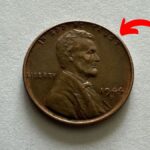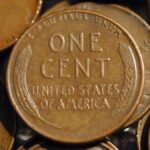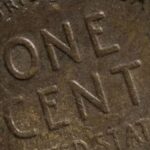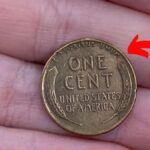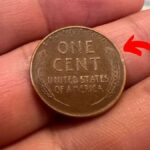The Lincoln Wheat Penny Valued at $40 Million: In 1976, as the United States celebrated its 200th year of independence, the U.S. Mint released a special commemorative quarter that would become one of America’s most memorable coins. The Bicentennial Quarter, distinguished by its unique reverse design featuring a colonial drummer, tells a fascinating story of both American history and numismatic interest.
The Birth of a Commemorative Coin
The journey of the Bicentennial Quarter began well before 1976. In preparation for America’s 200th birthday celebration, the U.S. Mint started producing these special quarters in 1975, marking each with the dual date “1776-1976.” This was the first time in U.S. history that quarters were minted with a double date. The coins continued to be struck through 1976, creating millions of pieces that would circulate through American pockets and purses.
Design and Symbolism
The Bicentennial Quarter’s design carries deep patriotic symbolism. While the obverse (front) maintains the familiar portrait of George Washington, the reverse (back) features a colonial drummer facing left, with a victory torch surrounded by 13 stars representing the original colonies. This design, created by Jack L. Ahr, was selected through a national competition, beating out hundreds of other submissions. The drummer symbolizes the spirit of revolution and the birth of American independence, making this quarter a miniature piece of sculptured history.
Varieties and Composition
The U.S. Mint produced several varieties of the Bicentennial Quarter. The standard circulation strikes were made of copper-nickel clad, the same composition used for regular quarters. However, the Mint also produced special collector versions in 40% silver, including both proof and uncirculated finishes. These silver versions were sold directly to collectors and never intended for circulation.
Collecting and Value
Despite common misconceptions, most Bicentennial Quarters are not particularly valuable in financial terms. Since they were produced in large quantities – over 1.7 billion pieces – standard circulated examples are worth their face value of 25 cents. Even uncirculated copper-nickel specimens typically sell for just a few dollars.
However, certain specimens can command higher prices among collectors. The 40% silver versions, especially in pristine condition, can be worth $10-50 or more. Proof versions in perfect condition might sell for $20-100. The most valuable examples are those with mint errors, such as doubled dies or off-center strikes, which might fetch several hundred dollars in exceptional cases.
Error Coins and Varieties
While not as valuable as some might claim, error versions of the Bicentennial Quarter do exist and interest collectors. These include:
Double Die Errors: Where parts of the design appear doubled due to multiple strikes Off-Center Strikes: Where the design is not centered on the planchet Missing Clad Layer: Where the copper-nickel coating is partially missing These error coins, while rare, typically sell for several hundred dollars rather than millions, depending on the error’s severity and the coin’s condition.
Historical Significance
The true value of the Bicentennial Quarter lies not in its monetary worth but in its historical significance. It represents a unique moment in American history when the entire nation came together to celebrate its bicentennial. These quarters were the first U.S. coins to feature a colonial design since the early 20th century, and they helped spark interest in coin collecting among a new generation of Americans.
Preservation and Care
For those fortunate enough to own Bicentennial Quarters, proper preservation is essential. Coins should be stored in appropriate holders away from humidity and extreme temperatures. Handling should be minimal and always by the edges to prevent fingerprints and oils from damaging the surface. While these steps won’t make the coins worth millions, they help preserve their historical and collectible value.
Educational Impact
Beyond their role as currency and collectibles, Bicentennial Quarters serve as educational tools. They help teach younger generations about American history, coin design, and the significance of the American Revolution. Many schools use these coins in history lessons to make learning about the nation’s bicentennial more tangible and interesting.
Legacy and Influence
The success of the Bicentennial Quarter program influenced future commemorative coin programs. It demonstrated that changing coin designs could generate public interest and celebrate important national events. This legacy continues today with various commemorative coin programs and quarter series featuring different designs.
Conclusion
The Bicentennial Quarter stands as a testament to American craftsmanship and historical pride. While not the million-dollar rarities sometimes claimed in misleading articles, these coins remain important artifacts of American numismatic history. Their true value lies in their role as tangible connections to our nation’s bicentennial celebration and their ability to inspire interest in both history and coin collecting. Whether worth 25 cents or a few hundred dollars, each Bicentennial Quarter carries with it a piece of American history that transcends monetary value.


